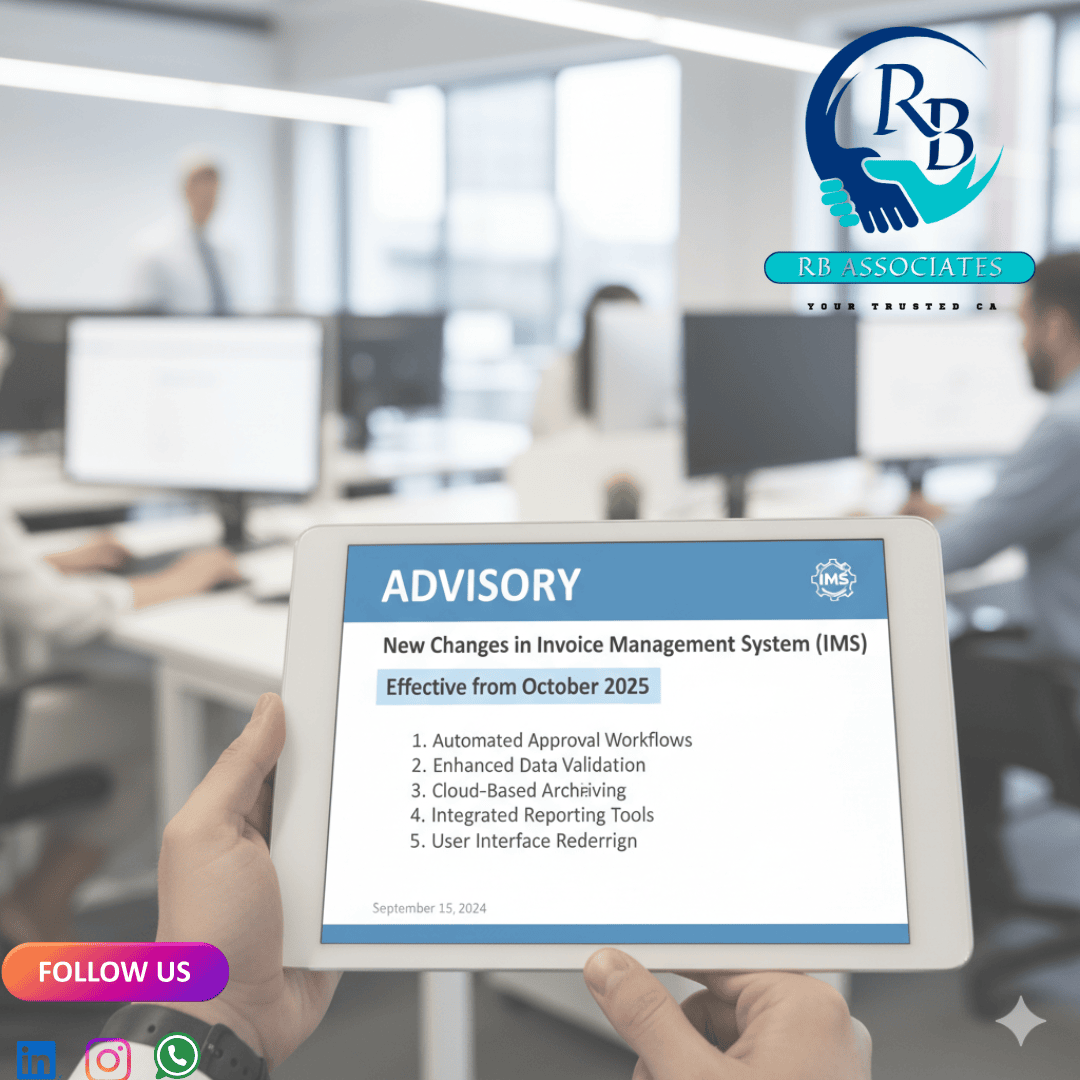The Goods and Services Tax Network (GSTN) has introduced new features in the Invoice Management System (IMS) to make GST compliance simpler, more transparent, and less burdensome for taxpayers. These changes will be effective from the October 2025 tax period.
Below is a simple explanation of what’s changing, along with examples to help you understand better.

1. Pending Action for Specified Records
Taxpayers now have the option to keep certain records pending for one tax period:
For monthly taxpayers → One month.
For quarterly taxpayers → One quarter.
Records eligible for “Pending” status:
Credit Notes or upward amendment of credit notes.
Downward amendment of CN (where original CN was rejected).
Downward amendment of Invoice/Debit Note (if the original invoice was accepted and GSTR-3B filed).
ECO-Document downward amendment (if the original was accepted and GSTR-3B filed).
🔹 Example:
Suppose you are a monthly filer. You receive a credit note from your supplier in October 2025, but you are unsure whether to accept or reject it. Earlier, you had to take immediate action. Now, you can keep it pending until the October return filing due date, giving you time to clarify with your supplier.
2. Declaring ITC Reduction Amount
The GSTN has clarified rules for Input Tax Credit (ITC) reversal:
If you never availed ITC on an invoice → No reversal needed.
If you availed ITC partially → Reverse only the portion availed.
What IMS now allows:
Taxpayers can declare the exact ITC amount they had availed and choose to reverse it fully or partially.
🔹 Example 1:
You received an invoice for ₹1,00,000 + GST of ₹18,000. You availed ITC of only ₹9,000. Later, the invoice is amended downward. In IMS, you now need to reverse only ₹9,000, not the entire ₹18,000.
🔹 Example 2:
You never availed ITC on a supplier’s invoice due to some internal error. Now if that invoice is rejected or amended, you don’t have to reverse anything since you never claimed it.
This prevents unnecessary reversals and ensures more accuracy.
3. Option to Save Remarks
Taxpayers can now add remarks while rejecting or keeping a record pending.
Remarks will appear in GSTR-2B for the recipient’s reference.
Suppliers can also see them in their Outward Supplies dashboard.
🔹 Example:
You reject a debit note from your supplier because the amount was wrongly calculated. While rejecting, you add the remark: “Wrong calculation – please reissue with correct value.”
This remark helps the supplier immediately identify the issue and take corrective steps.
4. Important Dates
Effective Date: October 2025 tax period.
Due Date for Pending Records: Depends on the date/tax period when the supplier uploaded the document.
🔹 Example:
If your supplier uploads a credit note dated 15th October 2025, you can keep it pending only until the due date of your October 2025 GSTR-3B filing.
5. Prospective Application
These features apply only to records filed after the rollout.
Old records will not get this facility.
✅ Key Takeaways
The IMS changes benefit taxpayers by:
Allowing extra time (pending option) for records.
Giving control over ITC reversals (only actual availed amount).
Improving communication between buyer and supplier (remarks).
These are positive steps toward making GST compliance simpler, more transparent, and taxpayer-friendly.
🔔 Note for Businesses: Be ready to adopt these new features starting from the October 2025 tax period.

